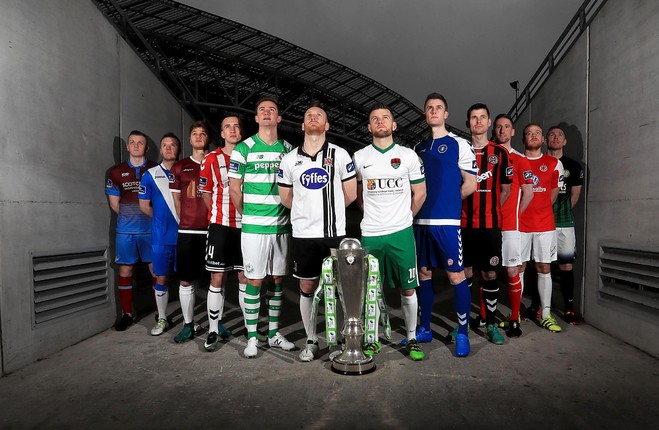IT’S BEEN QUITE the year for people casting votes.
Donald Trump is US president thanks to the quirk of US politics that is the Electoral College system. It allowed Trump to win the US Presidential Election despite his receiving approximately three million votes less than Hilary Clinton. Trump won 46% of the popular vote to Clinton’s 48%.
The Brexit vote across the UK last year was similarly contentious. Even though Northern Ireland and Scotland voted overwhelmingly to remain in the European Union, the future of both states has been defined by others, elsewhere, during an ‘all or nothing’ vote.
There is no electoral college system in Irish football. Nevertheless, we’ve somehow arrived at a situation where 30% of the popular vote was sufficient to change to the structure of our league.
At least everyone in the Brexit referendum was given the opportunity to vote and express their opinion. In our league, 40% of the clubs weren’t afforded that same opportunity and now find their futures affected by 30% elsewhere who thought change was needed.
Ultimately, neither Trump nor Brexit helps to explain how we’ve ended up with a decision to have two 10-team divisions from next season, or why the decision ended up being announced after teams had already committed to a new budget. Unfortunately, we might as well ask Trump for clarity on the league’s structural change as the response from clubs and the FAI on the process has offered little.
What we do know is that FAI Director of Competitions Fran Gavin has praised the clubs for their ‘brave decision’ during an interview with extratime.ie last week, though there’s no clarity or evidence whatsoever that the clubs had any part in the decision.
Gavin stated: “They formed their own association, the Premier Club Alliance, and they were looking for a change of structure. Amongst themselves, they came up with the decisions to go to 10 teams.
“I suppose it is a brave and courageous decision as it meant that three of them were going to go down in order to get a 10-team Premier and 10-team First Division.
Three teams going down is a high number from a league with only 12 teams. It was the clubs who made the decision, which was endorsed by the FAI.”
While there are clubs that have consistently sought a 10-team Premier Division, there’s no evidence clubs as a whole were looking to bring about the structural change proposed in the Conroy Report from 2015.
There are doubts that a majority of Premier Division clubs voted for the move — there’s even doubt that the clubs were aware it was a vote at all. The only thing that is crystal clear is that the decision was made without the agreement of a majority of clubs, in fact, the input of the eight First Division clubs was not considered by anyone.
This was not a decision reached through a popular vote. From speaking to a number of officials across a number of clubs, it’s likely that only five or six Premier Division clubs expressed a preference for the change, not even a majority of the sides in the top flight.
Even then, one of those clubs, Bray Wanderers, publicly withdrew their support for the change when they realised that a conversation at PCA level was being presented by the FAI as the justification for the change, while with the ‘decision,’ a wedge was being driven between Premier and First Division clubs. Sligo Rovers were also suggested to be wavering on their initial vote.
It quickly became clear during my conversations that some clubs didn’t consider the meeting where the structural change was discussed as a formal vote, feeling it was more ‘conversational’ based on an FAI request for feedback. There seems to have been no sense in the room at the time of the vote that its outcome would be used to define the structure of the league within a matter of months. It’s also very clear that even those clubs who preferred the 10-team option were not aware that the change would be brought about so quickly, requiring one quarter of the league to be relegated in a single season and the removal of the opportunity for second and third-placed teams in the First Division to be promoted.
It’s my understanding that the PCA informed the FAI that the clubs couldn’t come to an agreement and requested a meeting of all 20 clubs to discuss potential changes. Of course, this only goes to show the lack of a unifying vision from the clubs.
Ultimately, the impact to clubs as a result of this ‘decision’ by a minority has very real consequences for a number of sides who had already set out their budgets and plans for 2017. It begs the recurring question since the FAI and league merger: do the clubs have any real input into the running of the league?
Unfortunately, it would appear not.
The42 is on Instagram! Tap the button below on your phone to follow us!

